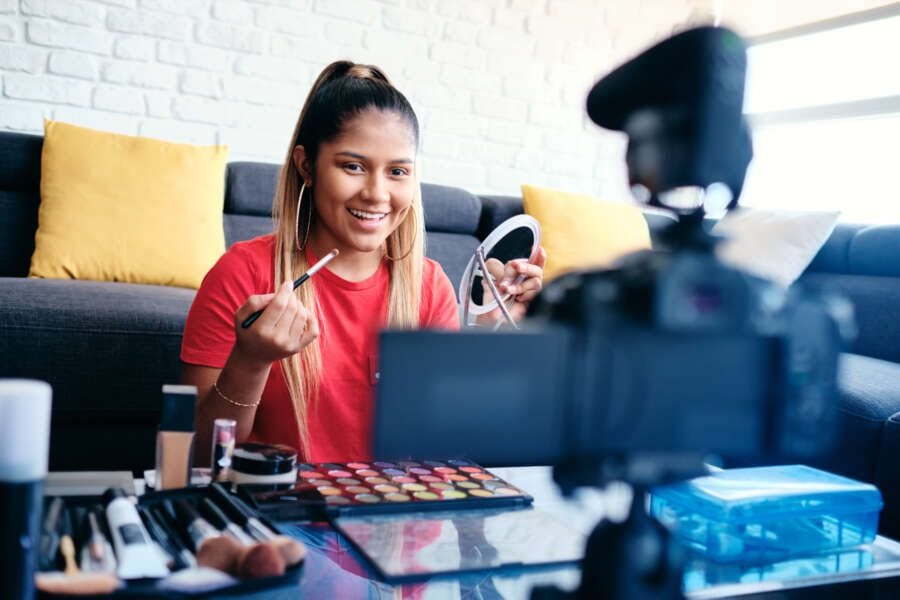
By Amy Jackson, Business Director, Incubeta
The collective reputation of online influencers took a big hit over the course of the COVID-19 pandemic. Several established influencers received negative media coverage after journeying to places like Dubai, Mexico and Barbados for what they claimed was “essential” work-related travel.
Despite this, the pandemic heightened demand for online influencers and increased the level of investment in “talent” from brand marketers. With the highstreet in lockdown, many retailers were struggling to reach their usual audience and facing a dramatic loss in revenue. Fashion retail brands were denied many of the visual and sensual stimuli they would evoke during lockdown. Things such as the shop window, the look and feel of the products in-store, the opportunity to try on clothes – were all gone during lockdown. For those brands, online influencers became both the new shop window and the new mannequins, showing off garments through videos and live streaming. Many high street fashion retailers continued gifting influencers their latest lines, such as lockdown loungewear, so that they could wear and review the clothes for their loyal audiences in an authentic and visually engaging way.
The simultaneous boom in ecommerce over the lockdown was also good news for influencers. Brand advertisers, restricted to online sales, were more willing to invest in online influencer content, to reduce the ‘browse-to-purchase window’ of their target consumers.
Growing in influence
Influencer marketing, as we think of it today, first emerged when brands noticed certain YouTubers, particularly those providing make-up tutorials and advice, were prompting spikes in sales for products featured in their videos.
Since then the influencer market has exploded. In addition to YouTube, channels such as Instagram and TikTok are now hugely important within this space.
Likewise, the number of verticals being covered by influencers has increased dramatically. In addition to fashion and beauty bloggers, you’ll find macro and micro influencers covering topics such as health and fitness, mental wellbeing, parenting and childcare, cars and car maintenance, DIY, plumbing, home and garden care, sport, movies, and just about any other subject you could think of.
In some ways, influencer marketing has started to blur the line between online influencers and traditional celebrities. Many consumers prefer to receive marketing via online influencers rather than traditional celebrity endorsements as the lifestyles of the influencers match their own more closely. This has led marketers to invest progressively more budget over time in micro influencers, i.e. those with smaller audience numbers.
The field of influencer marketing has never been more important to brands, however, at the same time the market has never been more saturated. There’s no denying it’s hard. Content doesn’t just appear on our screens and a loyal following doesn’t just increase overnight. The time and effort put in by these content curators is admirable, but in a world where it seems anyone can become an ‘influencer’, the quality of the content on offer can vary wildly. So how can brands make sure they are working with the right influencers for them? What’s more, how can they measure the impact and ROI of their investment in influencer talent?
Identifying your audience
One of the most common pitfalls brands make in their approach to influencer marketing is that they don’t think about the end audience in enough detail. Brands tend to identify an influencer with quality content and a lot of followers, but they don’t examine the influencer’s audience closely enough. A quarter of a million engaged followers is great, but if those followers are mainly 16-to-25 years olds and the target audience is 30-to-35, investing in that influencer would be a waste of time and precious marketing budget.
However, it is possible for brands to explore the demographics of influencers’ audiences to bridge the gap between the specific demographic and a brand’s target audiences. If possible it’s important to get relevant data directly from your influencer partner to ensure their following will help you reach your target audience and achieve your KPIs. It’s important to make sure their followers are genuine (not bots) and that the content they are putting out there is fully in tune with your brand’s objectives. The brand’s focus should always be on ‘quality of influence’ over ‘quantity’.
Having identified the influencers you want to work with, it makes sense to support them with visual assets and any other relevant materials to help them sell your product. Influencers have gained their followers because of personality, and individual flair so don’t be too prescriptive in your creative brief.
Amplify across channels
Finally, and perhaps most importantly in 2021, don’t just limit the use of influencer content to the social platforms the content originally appeared on. You need to use your brand’s own influence (and wider media budget) to amplify influencer content across the web and help it reach a wider audience.
One way to do this is to incorporate elements of influencer content in your online display advertising. This also provides marketers with an excellent way to measure key KPIs to quickly establish what sort of content is working and what isn’t, and to work closely with your influencer partners on optimising engagement.
Influencers are here to stay, they’ve proven themselves to be an impactful, creative and powerful marketing tool. A savvy marketer will cease the opportunity to amplify influencer content across the open web and engage a whole new audience, raising brand awareness, increasing sales, and ultimately revenue. It’s time for brand marketers to fully integrate this form of marketing into their wider marketing mix and leverage the significant benefits it can deliver for brand awareness and performance campaigns.


